
Blog
How to turn your marketing content into content to sell?

En France seules 43% des entreprises considèrent leurs départements Marketing et Commercial comme alignés (étude CMIT 2022). Ce chiffre est en très légère hausse par rapport à 2021. La relation des équipes commerciales avec les contenus marketing, créés pour leur usage, reste pour le mieux floue et bien souvent insatisfaisante/insuffisante. Ainsi 90% des contenus marketing ne sont pas utilisés par les commerciaux (Jeff Ernst). Nous vous proposons à travers cet article de transformer vos contenus Marketing en contenus pour Vendre !
I) Pourquoi vos contenus marketing ne sont-ils pas utilisés par vos commerciaux ?
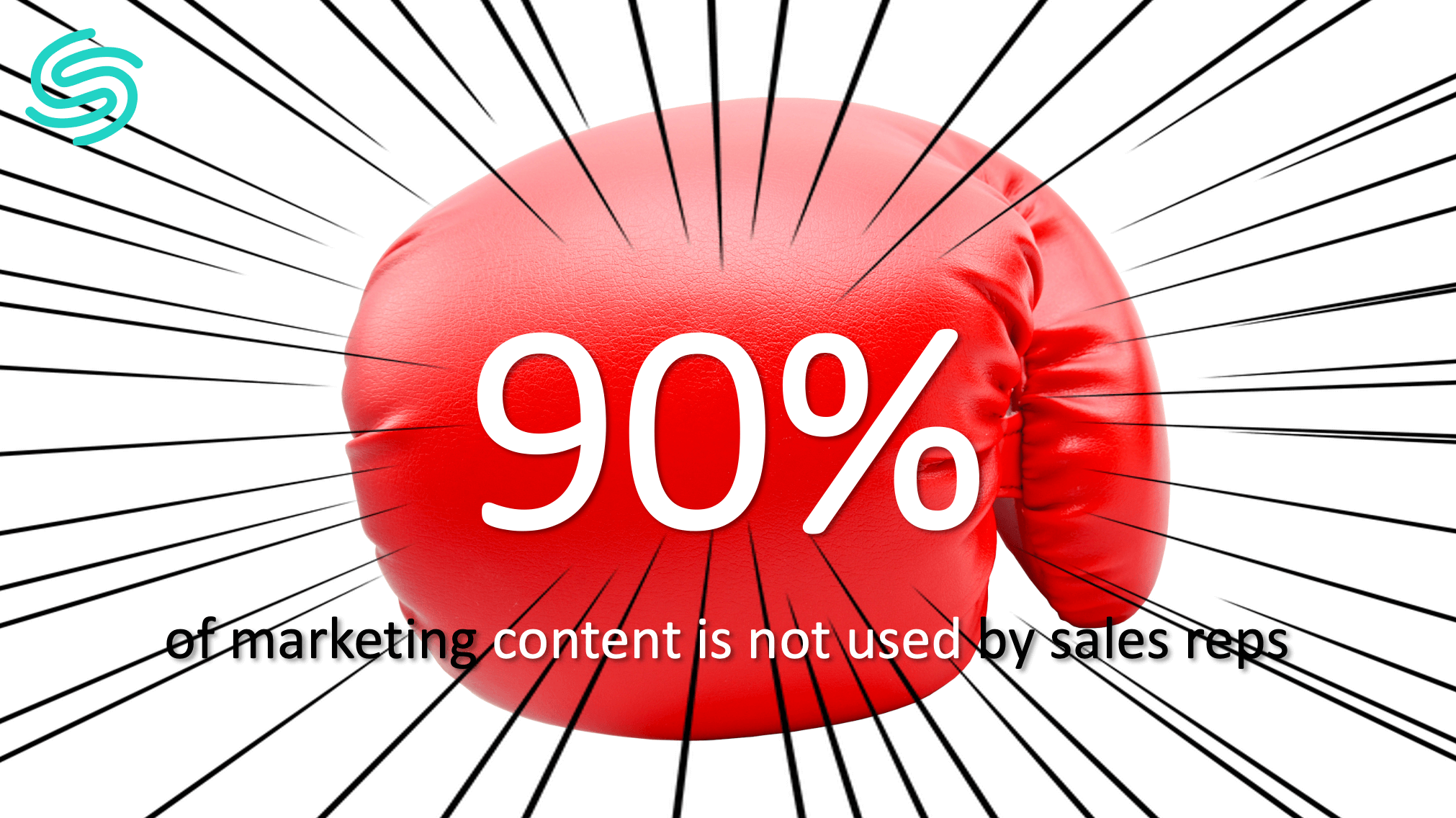
Dans son approche vis-à-vis des contenus marketing, les commerciaux ont généralement une démarche pragmatique centrée sur la valeur ajoutée perçue pour leurs actions quotidiennes. Les éléments qui peuvent pousser un commercial à ne pas utiliser un asset sont nombreux. En mettant de côté les comportements délibérément antagonistes, voici quelques raisons pour lesquelles les commerciaux peuvent ne pas utiliser vos contenus marketing :
- Too rigid and restrictive
- Unknown to sales reps
- Not suitable for sale
- Too much content, too close to each other
- Not customizable to the prospect/client
- Not mastered by the salesperson
- Not up to date or wrong
- Inconsistent between them (website vs emailing ...)
- Not accessible at the right time
- Useless, already in possession of the prospect/client
Bien souvent les raisons sont multiples et puisque le commercial est seul responsable de son usage ou non d’un support, ces raisons sont inconnues du Marketing. Le floue artistique entourant la pertinence d’un support marketing pouvant être sublimé par la réponse enjouée bien que peu argumentée, du sales sur son usage du support en rendez-vous.
II) Pourquoi est-ce un problème ?
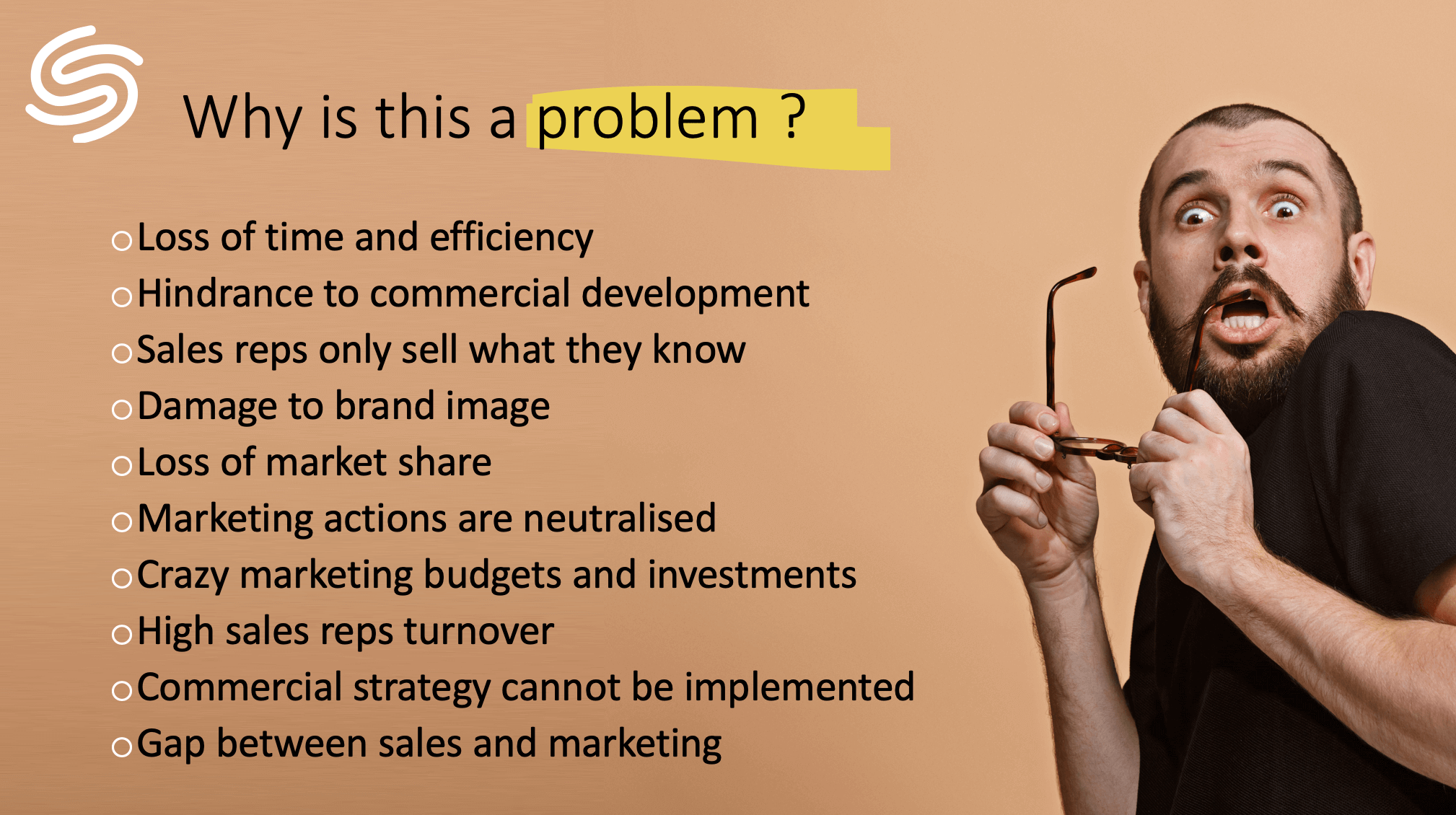
Le flou autour de l’usage des contenus cache souvent de nombreuses pratiques ayant un impact réel sur le développement de l’entreprise. Loin de se limiter au traditionnel « c’est dommage de ne pas l’utiliser » l’impact pour l’entreprise est souvent minoré. Pourtant ne pas utiliser vos contenus marketing génère de nombreux effets collatéraux. Nous pouvons citer par exemple :
- Loss of time and efficiency
- Barrier to business development
- The salesman only sells what he masters
- Degradation of the brand image
- Loss of market share
- Marketing actions are neutralized
- Crazy marketing budgets and investments
- High commercial turnover
- Stratégie commerciale impossible à mettre en œuvre
- Gap between business and marketing
Les contenus marketing sont au cœur de la relation de votre entreprise avec vos prospects et clients. Le bon alignement constructif des équipes est clé et générateur de croissance.
III) Portrait robot d’un contenu marketing pour vendre
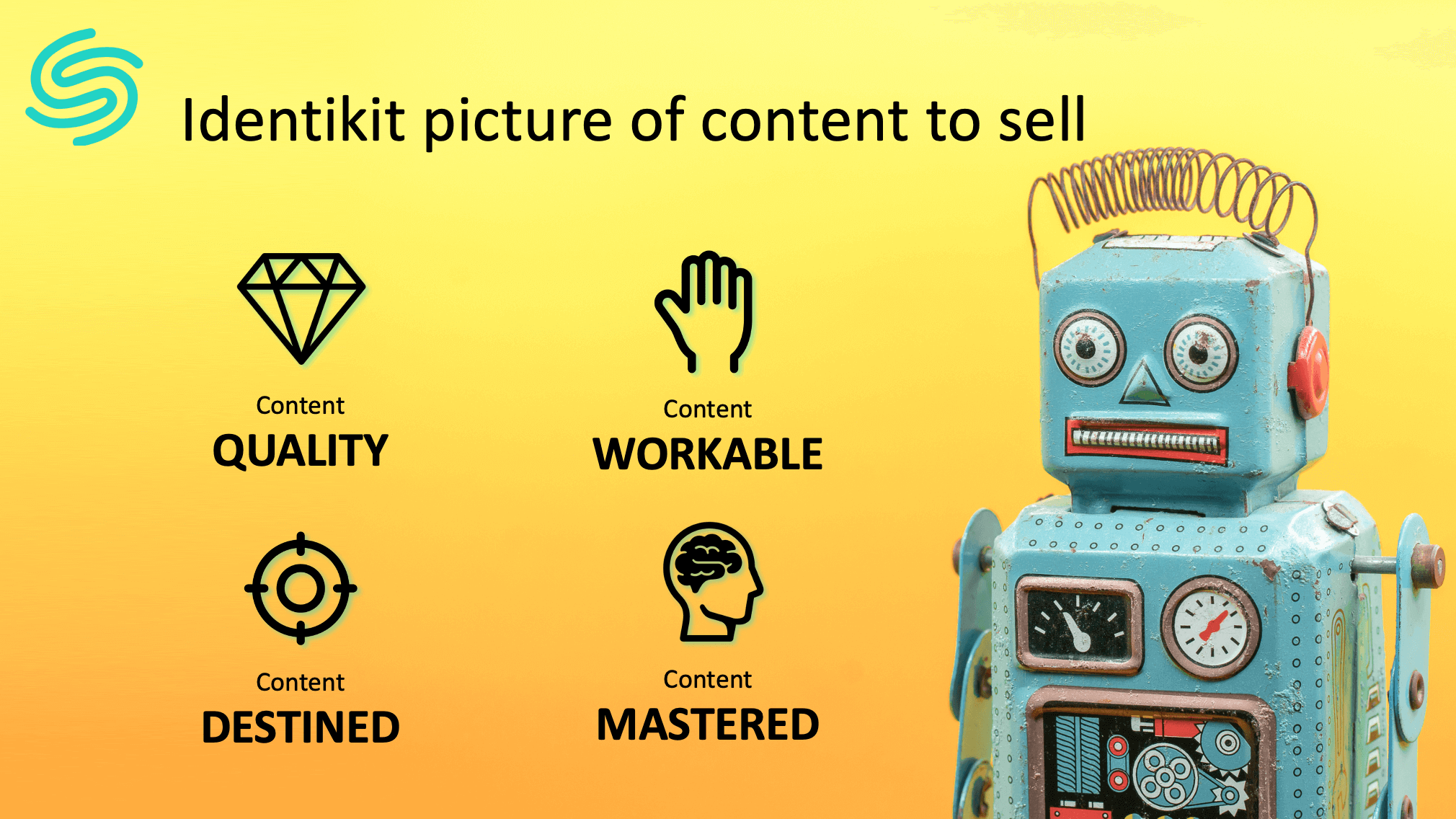
Transformez vos contenus marketing en contenus pour vendre. Cette démarche permet de recentrer le contenu dans votre approche commerciale et de sensiblement booster son usage. Chez Salesapps nous appelons contenus pour vendre les contenus :
- of QUALITY
- DESTINATES
- MANIABLES
- CONTROLLED
1. QUALITY marketing content
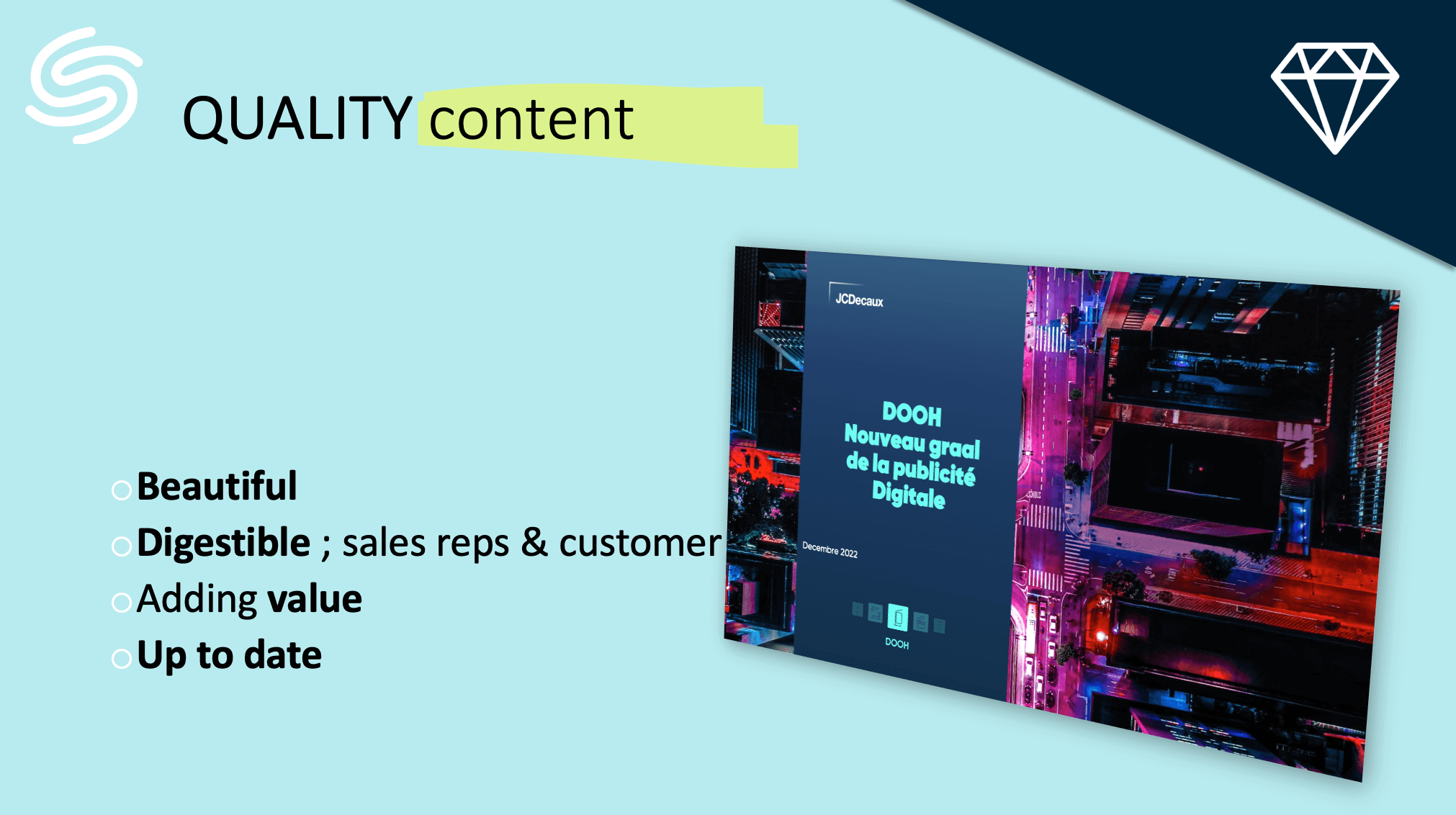
C’est probablement le critère d’un contenu pour vendre le plus intuitif. Pour être utilisé, un contenu marketing doit être :
- Appealing
- Easy to digest for both the salesperson and the customer
- Bringing added value to the sales process
- Up to date!
La qualité intrinsèque du contenu ne garantit pas l’usage qu’en font vos équipes.
2. A marketing content DESIGNED FOR
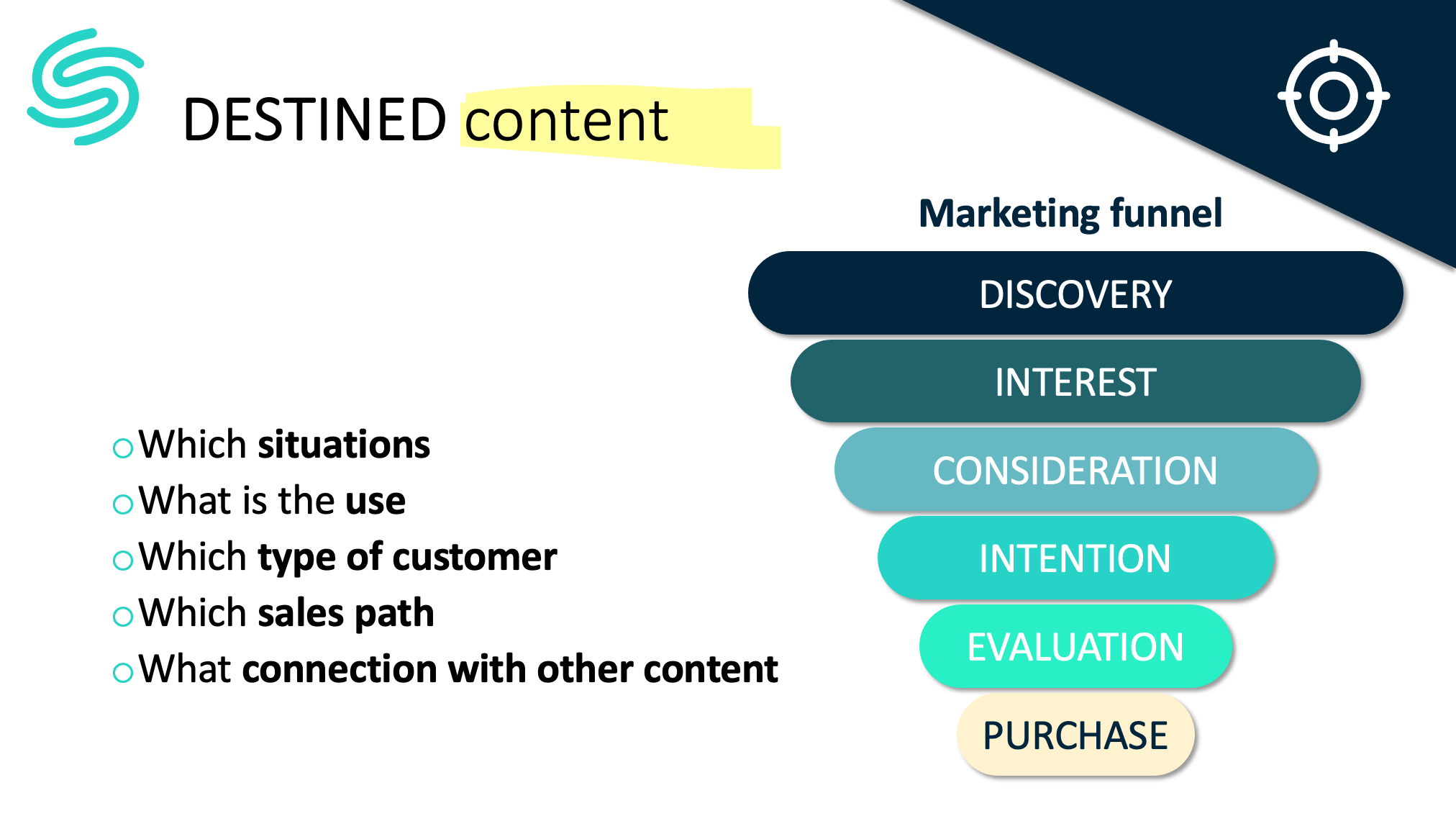
Pour être utilisé, votre contenu marketing doit également avoir un usage défini. Dans quelles situations ce contenu peut-il être utilisé ? A quel type de client et d’interrogations répond-il ?
Dedicating your content to specific uses allows you to delineate their use and professionalize them. For example, a customer reference can be presented with viewpoints adapted to different levels of maturity or for customers in different sectors of activity.
Targeting your content to specific uses through sales paths helps validate the relevance of information and reinforce the salesperson's message. It also makes it possible to synthesize the content available to sales reps and to interconnect content with a view to offering flexibility in appointments. For example:
- A complete product catalog (product, technical details, illustration photo, complementary products, etc.) = very large and difficult to manage content. ) = very large content that is difficult to handle. No statistics can be used, except for the fact that the catalog is used or not.
VS
- Une arborescence de plaquettes commerciales, les fiches techniques en document lié ne sont affichées que si l’interlocuteur est intéressé, la gamme produit facilite l’upsell et le cross-sell, un espace photo filtré permet d’identifier facilement le meilleur cliché en fonction de plusieurs critères, etc. Pour couronner le tout, le marketing et la direction commerciale peuvent analyser les meilleures pratiques en termes de rebond entre les contenus et renforcer ce qui marche le mieux.
Targeting your content at sales reps is clearly a game changer, but it's still not enough.
3. WORKABLE marketing content

Nous l’avons en partie abordé dans le paragraphe sur la destination des contenus. Vos contenus marketing doivent être utilisable en rendez-vous :
- Presentable
- Customizable
- Shareable
Le contenu marketing doit être agréable à utiliser et à visionner. Loin de l’aspect graphique simple, le contenu doit appuyer le discours du commercial et apporter de l’émotion. Ce contenu doit permettre également la personnalisation nécessaire à l’approche commerciale et faciliter le partage (indépendamment de la connexion et du poids du contenu) et le suivi commercial. Concevoir vos contenus en anticipant ce besoin naturel du commerce contribue fortement à son usage. Vous disposez donc théoriquement de contenus de qualité, destiné à un usage et maniable.
4. MASTERED marketing content
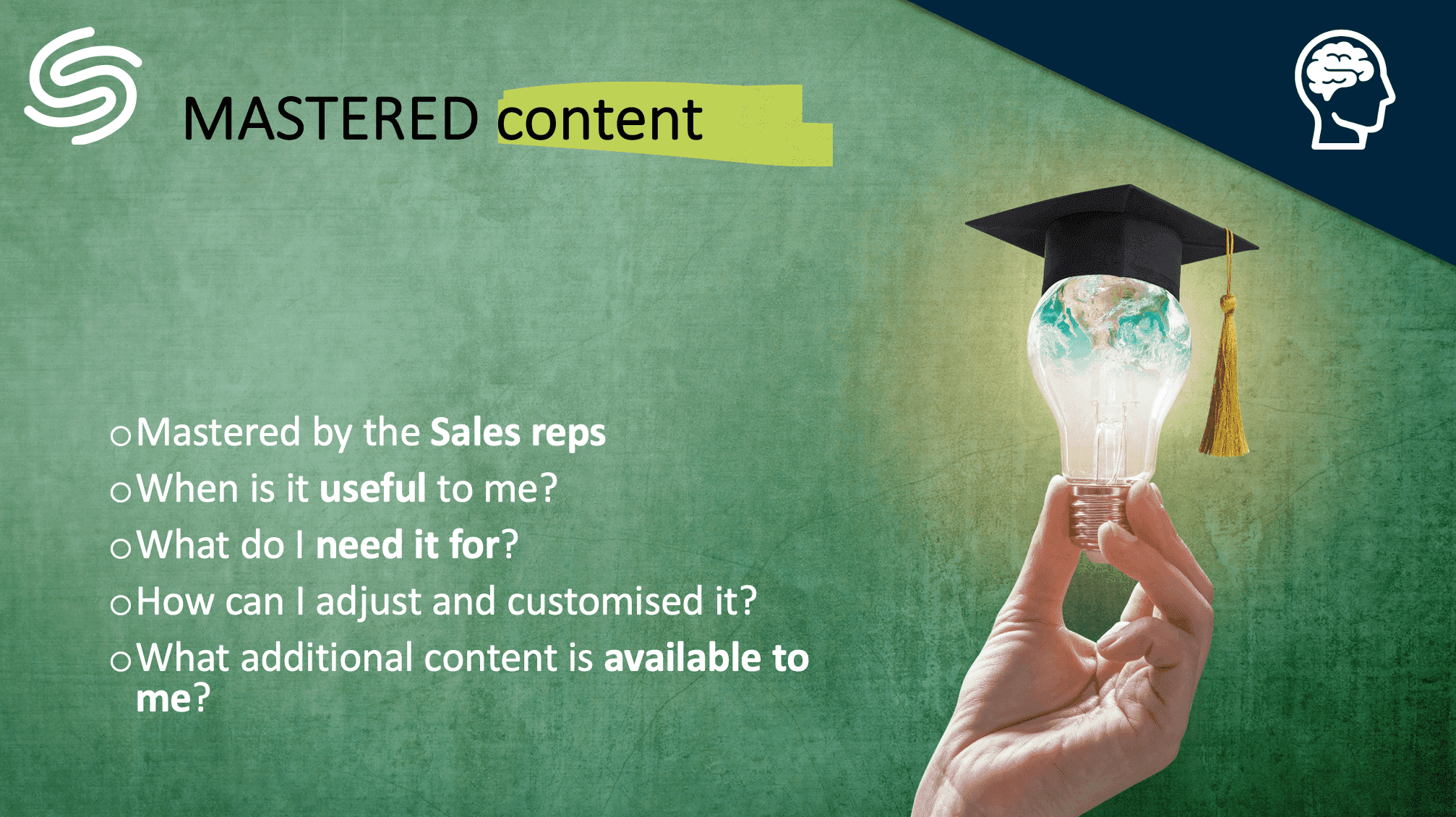
The last element that distinguishes content to sell from simple marketing content is the actual control of these elements by the sales person. In other words, content to sell must be mastered by the sales person. He must naturally be able to know :
- When this content is useful
- What is it used for in the commercial process
- How to customize it effectively
- What can he add to this content according to the client's feedback
This appropriation of content by the salesperson is often left largely to the salesperson. Yet it is from this appropriation that usage, ease of use and constructive feedback are born. Many structures limit themselves to recommending content.
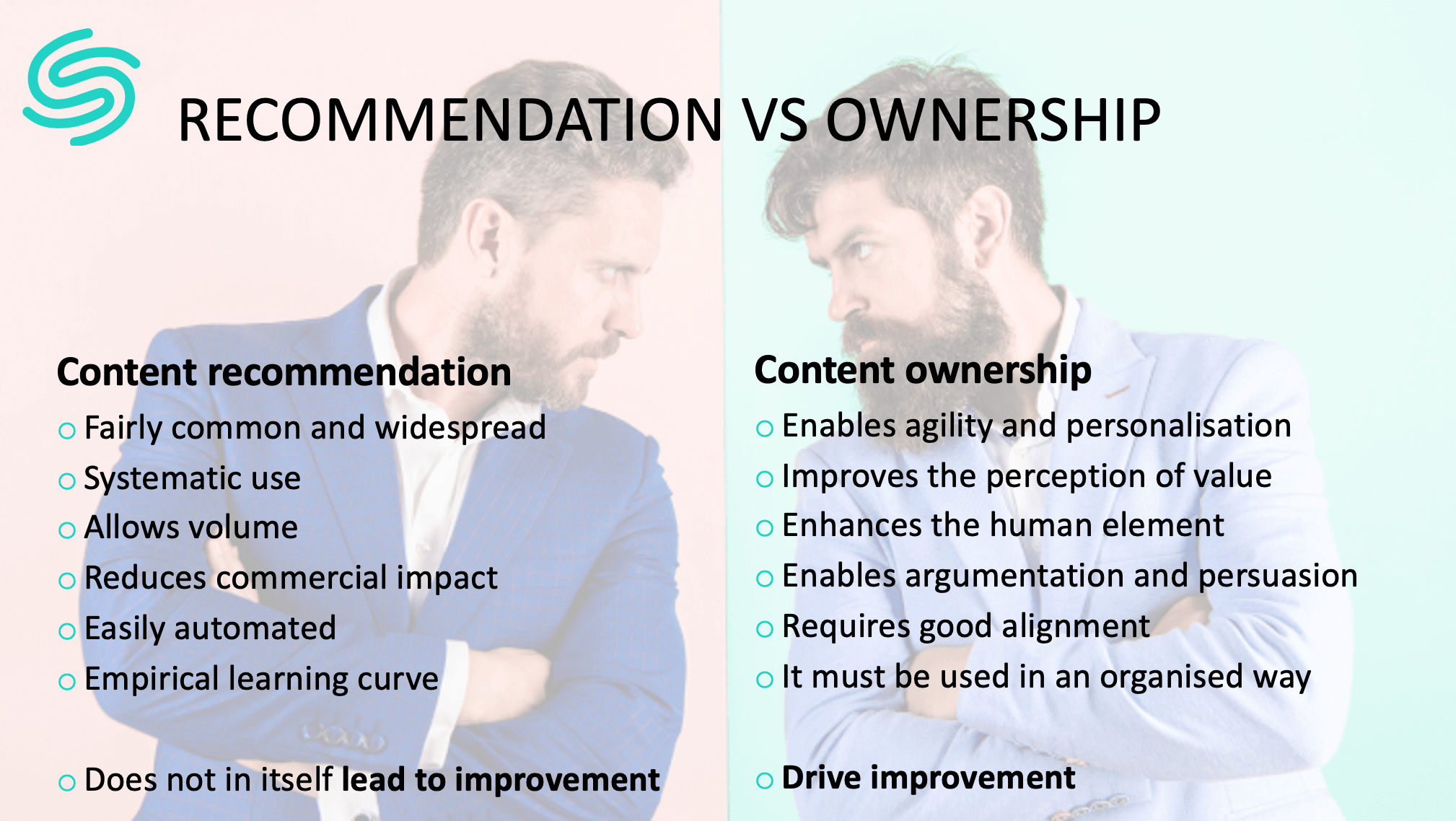
La préconisation est l’implémentation la plus simple donnant l’illusion d’un alignement. Je te préconise telle présentation dans telle situation. C’est une automatisation facile qui limite l’action commerciale. Si vos prospects reçoivent vos commerciaux c’est pour une expérience plus personnalisée et qualitative qu’une simple automatisation. Aussi l’appropriation du contenu par le commercial permet d’améliorer sensiblement la perception de valeur pour vos clients. La composante humaine du commercial est renforcée et la maîtrise du contenu permet l’argumentation et la persuasion.
The appropriation by the commercial requires organization, but the game is worth the candle!
IV) Un contenu marketing = un pitch
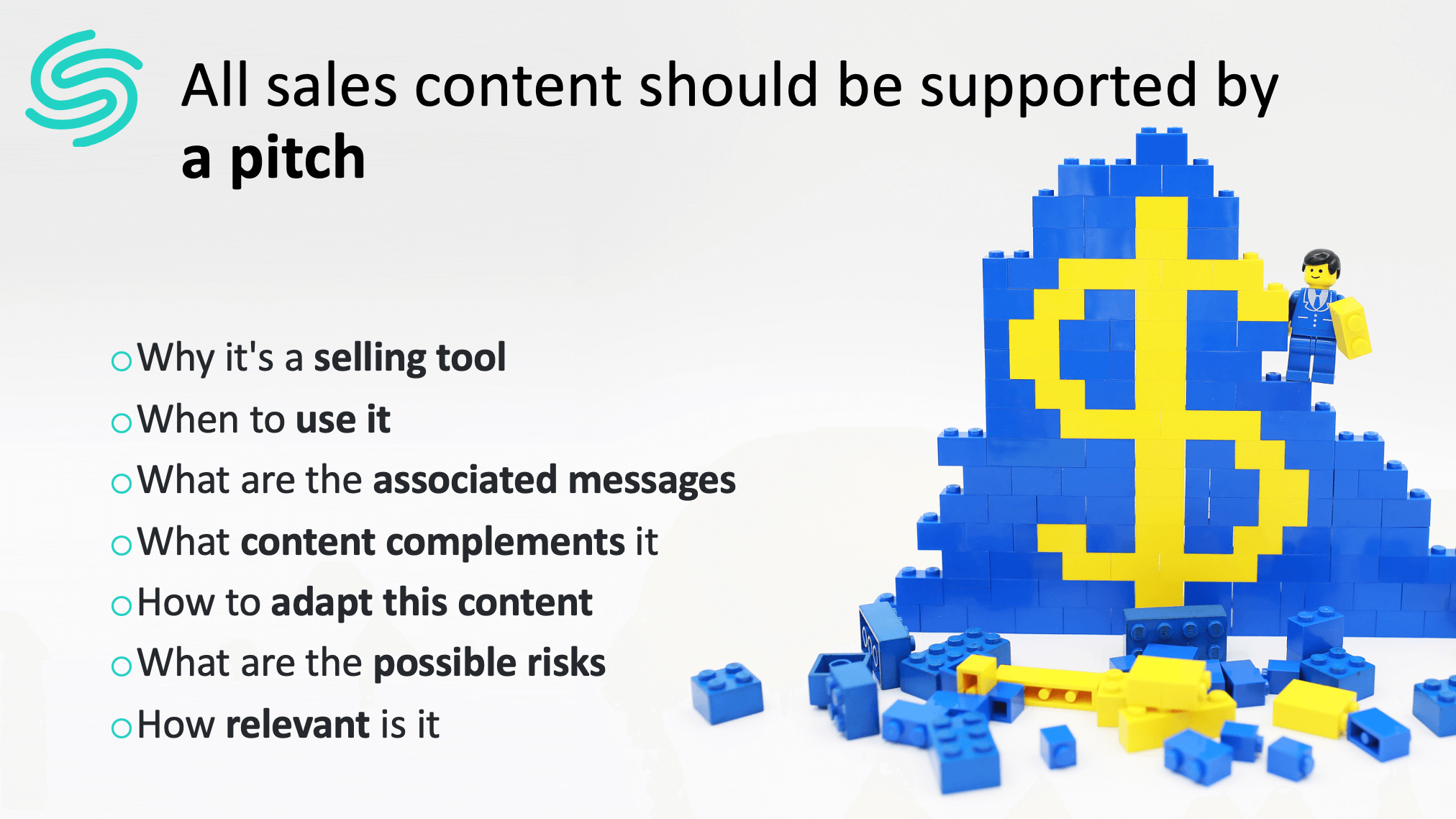
Thus each content should be accompanied by its pitch:
- Why does it allow you to sell
- When to use it
- What are the associated discourses
- What content complements it
- How to adapt this content
- What are the possible risks
- What is its relevance
A content to sell is therefore much more than a marketing content. It is marketing content and all the organization to allow its use when the time comes by the salesperson.
C’est cette complexité que Salesapps se propose de vous aider à maîtriser et de structurer. Ainsi un contenu pour vendre est le produit ultra raffiné d’un alignement Vente & Marketing réussi :
- Content that meets the needs of prospects, sales reps
- Content whose marketing relevance is controlled by the sales reps
- Content that fits the company's strategy
- Content that facilitates the sale
V) Salesapps, votre meilleur atout pour transformer vos contenus marketing en contenus pour vendre
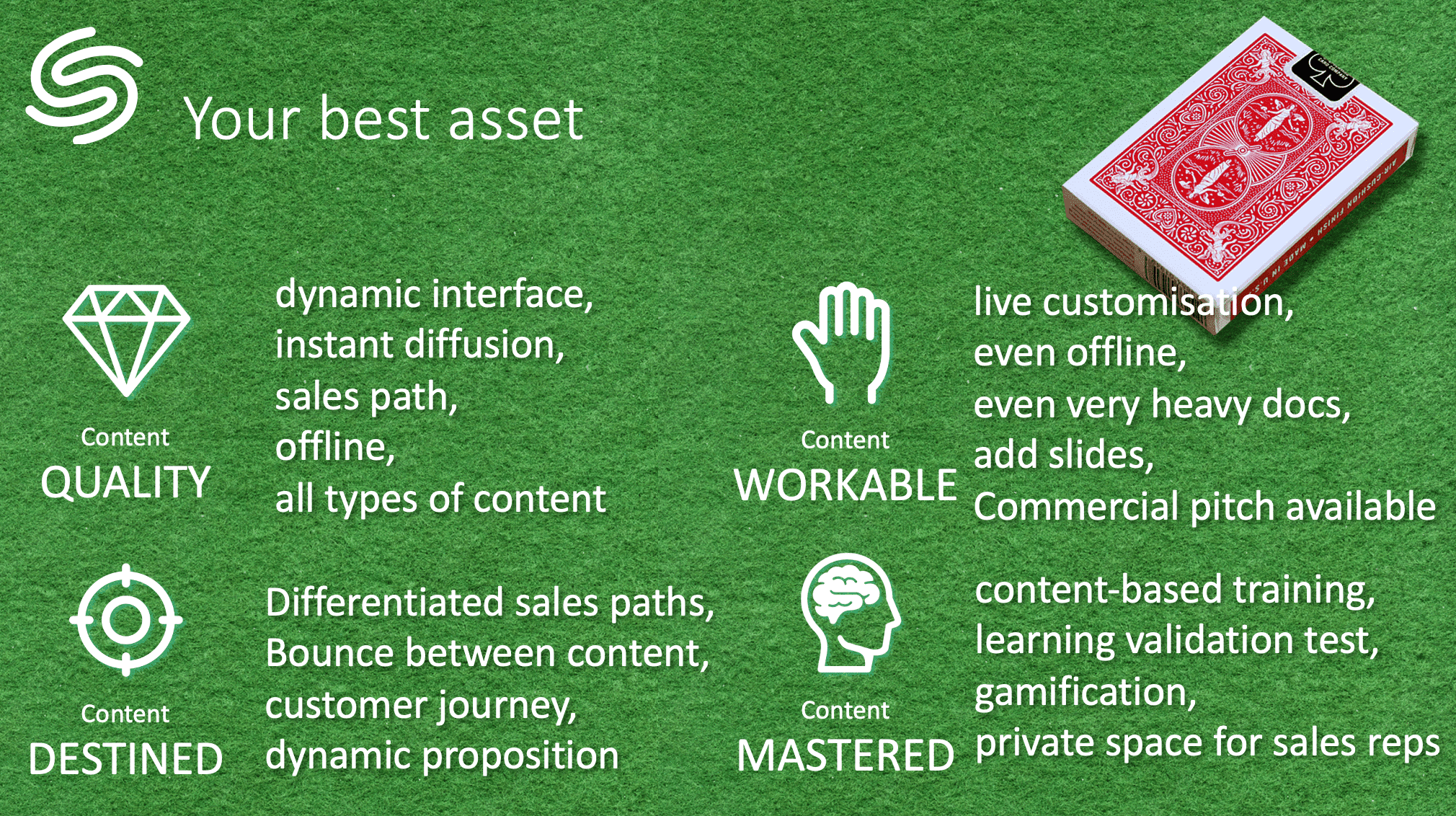
Salesapps contributes to the different attributes of a content to sell:
- QUALITY content
- A content DESTINED
- WORKABLE content
- A CONTROLLED content
A content to sell, more than a good content, a good organization around your content to maximize its use.
Salesapps facilite la diffusion de vos contenus à travers une arborescence épousant votre approche commerciale, interconnectant les contenus entre eux et facilitant leur personnalisation. Les statistiques d’utilisation, de partage et de lecture vous permettent de vous assurer de la pertinence et de la maîtrise par les équipes. Vous pouvez également compléter la publication de vos contenus de versions formantes ainsi que de quiz dans l’optique d’aider le commercial à approfondir sa maîtrise. La dynamique d’itération permet d’engager l’organisation marketing et commerciale dans une amélioration continue permettant l’alignement.




